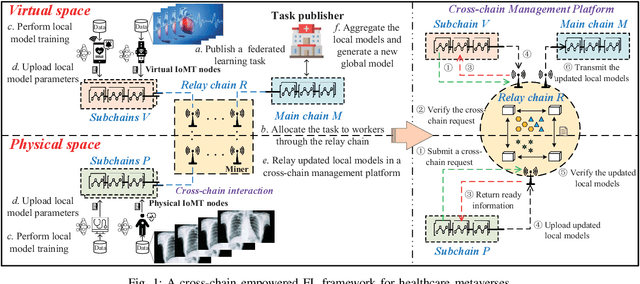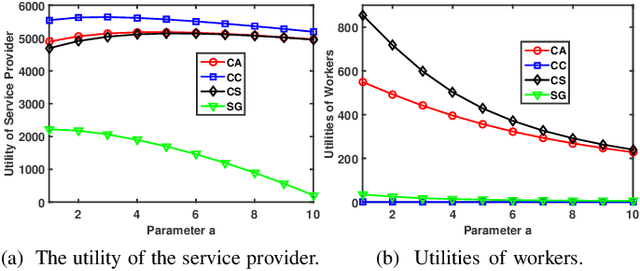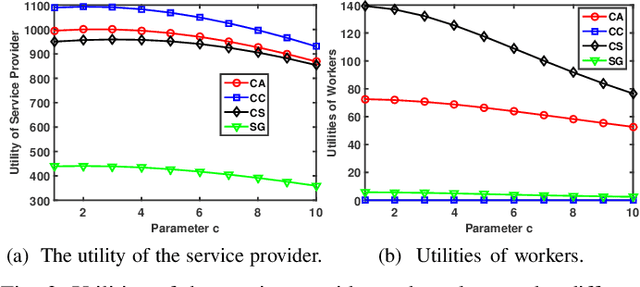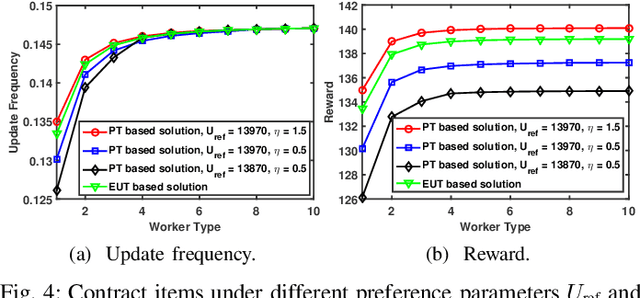Bingkun Lai
On-demand Quantization for Green Federated Generative Diffusion in Mobile Edge Networks
Mar 07, 2024Abstract:Generative Artificial Intelligence (GAI) shows remarkable productivity and creativity in Mobile Edge Networks, such as the metaverse and the Industrial Internet of Things. Federated learning is a promising technique for effectively training GAI models in mobile edge networks due to its data distribution. However, there is a notable issue with communication consumption when training large GAI models like generative diffusion models in mobile edge networks. Additionally, the substantial energy consumption associated with training diffusion-based models, along with the limited resources of edge devices and complexities of network environments, pose challenges for improving the training efficiency of GAI models. To address this challenge, we propose an on-demand quantized energy-efficient federated diffusion approach for mobile edge networks. Specifically, we first design a dynamic quantized federated diffusion training scheme considering various demands from the edge devices. Then, we study an energy efficiency problem based on specific quantization requirements. Numerical results show that our proposed method significantly reduces system energy consumption and transmitted model size compared to both baseline federated diffusion and fixed quantized federated diffusion methods while effectively maintaining reasonable quality and diversity of generated data.
Resource-efficient Generative Mobile Edge Networks in 6G Era: Fundamentals, Framework and Case Study
Dec 19, 2023Abstract:As the next-generation wireless communication system, Sixth-Generation (6G) technologies are emerging, enabling various mobile edge networks that can revolutionize wireless communication and connectivity. By integrating Generative Artificial Intelligence (GAI) with mobile edge networks, generative mobile edge networks possess immense potential to enhance the intelligence and efficiency of wireless communication networks. In this article, we propose the concept of generative mobile edge networks and overview widely adopted GAI technologies and their applications in mobile edge networks. We then discuss the potential challenges faced by generative mobile edge networks in resource-constrained scenarios. To address these challenges, we develop a universal resource-efficient generative incentive mechanism framework, in which we design resource-efficient methods for network overhead reduction, formulate appropriate incentive mechanisms for the resource allocation problem, and utilize Generative Diffusion Models (GDMs) to find the optimal incentive mechanism solutions. Furthermore, we conduct a case study on resource-constrained mobile edge networks, employing model partition for efficient AI task offloading and proposing a GDM-based Stackelberg model to motivate edge devices to contribute computing resources for mobile edge intelligence. Finally, we propose several open directions that could contribute to the future popularity of generative mobile edge networks.
Blockchain-empowered Federated Learning for Healthcare Metaverses: User-centric Incentive Mechanism with Optimal Data Freshness
Jul 29, 2023



Abstract:Given the revolutionary role of metaverses, healthcare metaverses are emerging as a transformative force, creating intelligent healthcare systems that offer immersive and personalized services. The healthcare metaverses allow for effective decision-making and data analytics for users. However, there still exist critical challenges in building healthcare metaverses, such as the risk of sensitive data leakage and issues with sensing data security and freshness, as well as concerns around incentivizing data sharing. In this paper, we first design a user-centric privacy-preserving framework based on decentralized Federated Learning (FL) for healthcare metaverses. To further improve the privacy protection of healthcare metaverses, a cross-chain empowered FL framework is utilized to enhance sensing data security. This framework utilizes a hierarchical cross-chain architecture with a main chain and multiple subchains to perform decentralized, privacy-preserving, and secure data training in both virtual and physical spaces. Moreover, we utilize Age of Information (AoI) as an effective data-freshness metric and propose an AoI-based contract theory model under Prospect Theory (PT) to motivate sensing data sharing in a user-centric manner. This model exploits PT to better capture the subjective utility of the service provider. Finally, our numerical results demonstrate the effectiveness of the proposed schemes for healthcare metaverses.
 Add to Chrome
Add to Chrome Add to Firefox
Add to Firefox Add to Edge
Add to Edge